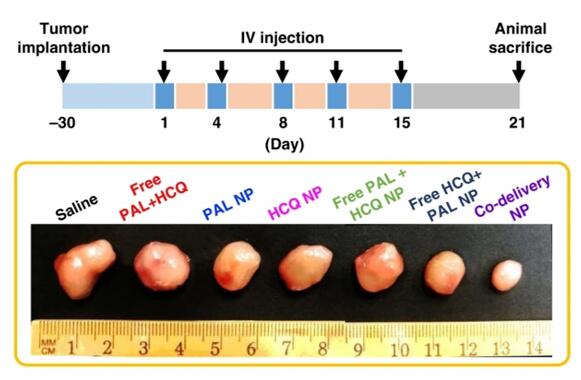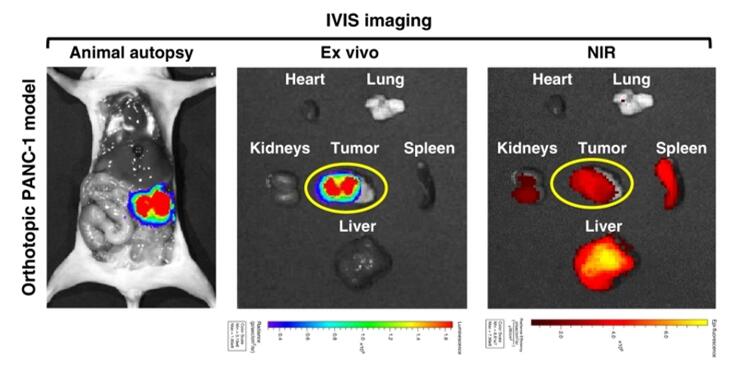Nanodrugs for Effective Pancreatic Cancer Immunotherapy Found
Pancreatic cancer is the most deadly major cancer, with a five-year survival rate of 4%. One reason for its high mortality is the location of the pancreas deep in the body, which makes early diagnosis difficult. New research on nanodrugs may improve this survival rate, however.
In a recent study, Li Juan, an associate researcher in the Nanomedicine and Safety Research Group of the Institute of High Energy Physics, CAS, and Prof. Meng Huan, a researcher at UCLA in the U.S., revealed important progress using nanodrugs for the treatment of pancreatic cancer. Their study, entitled "Use of ratiometrically designed nanocarrier targeting CDK4/6 and autophagy pathways for effective pancreatic cancer treatment," was published online in Nature Communications.
Utilizing remote loading to co-encapsulate CDK4/6 inhibitor palbociclib (PAL) and an autophagy inhibitor hydroxychloroquine (HCQ), the research team demonstrated a ratiometrically designed mesoporous silica nano-formulation with synergistic efficacy in subcutaneous and orthotopic pancreatic ductal adenocarcinoma (PDAC) mouse models. The synergism is attributed to the effective intra-tumoral buildup of PAL/HCQ, which otherwise exhibits a distinctly different circulatory and biodistribution profile. PAL/HCQ co-delivery nanoparticles led to the most effective shrinkage of PDAC compared to various controls, including a free drug mixture. Immunohistochemistry revealed that PAL/HCQ co-delivery nanoparticles trigger an anti-apoptotic pathway after repetitive intravenous administrations in mice. When combined with a Bcl inhibitor, the performance of co-delivery nanoparticles is further improved, leading to a long-lasting anti-PDAC effect in vivo. Besides identifying the efficacy of the PAL/HCQ combination, the researchers also identified versatile CDK4/6i combinations such as additional autophagy inhibitors, chemotherapeutic agents, MEK inhibitors, and immunomodulatory drugs. Identifying structurally and pharmacologically suitable drug pairs and designing additional nanocarriers for ratiometrically co-packaged CDK4/6i combination therapy offers therapeutic promise. Moreover, nanocarriers are expected to be used to determine structurally and pharmacologically appropriate drug combinations.


Contact Information
Mr. Guo Lijun
ljguo@ihep.ac.cn